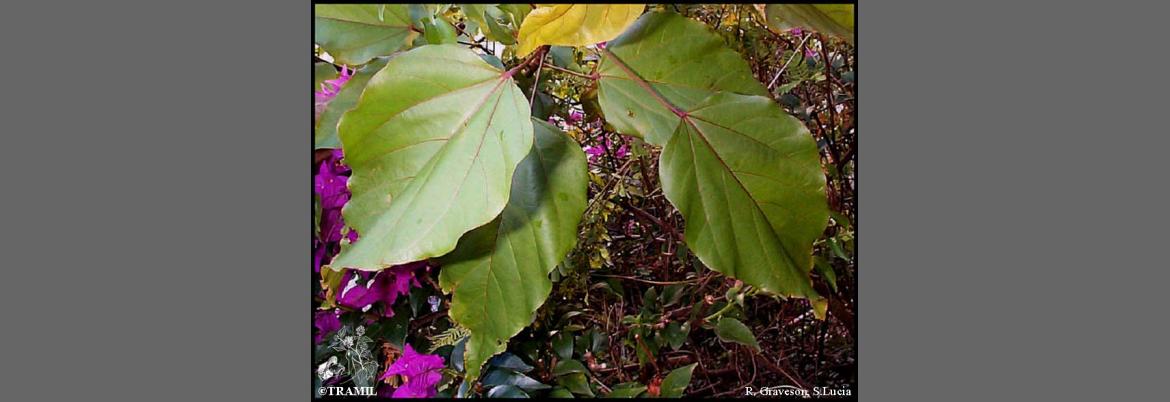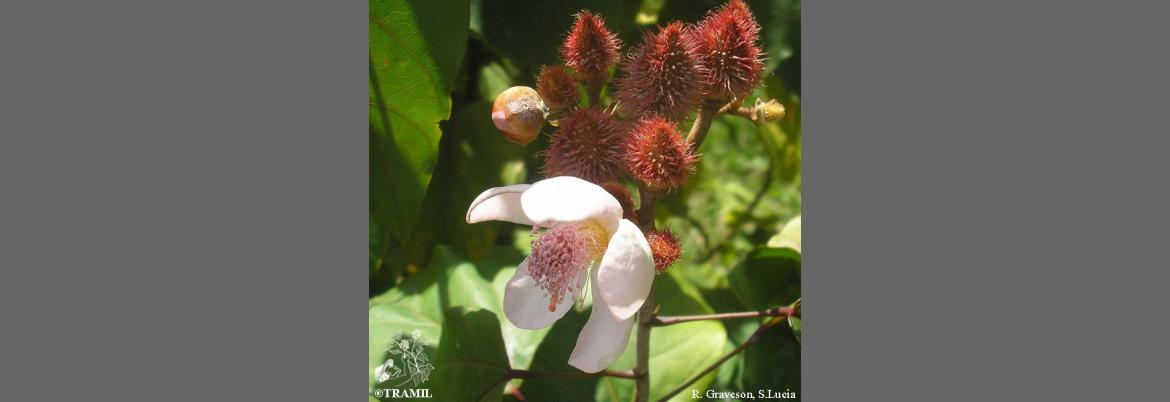1 GERMOSEN-ROBINEAU L, GERONIMO M, AMPARO C, 1984
Encuesta TRAMIL. enda-caribe, Santo Domingo, Rep. Dominicana.
2 WENIGER B, 1987-88
Encuesta TRAMIL. enda-caribe, Santo Domingo, Rep. Dominicana.
3GUPTA M, ESPOSITO AVELLA M, 1988
Evaluación química y farmacológica de algunas plantas medicinales de TRAMIL. CIFLORPAN, Universidad de Panamá, Ciudad de Panamá, Panamá.
4 ANGELUCCI E, ARIMA HK, KUMAGAI EA, 1980
Annatto. 1. Preliminary data of the chemical composition. Col Inst Technol Aliments 11:89-96.
5 TIRIMANA A, 1981
Study of the carotenoid pigments of Bixa orellana L. seeds by T.L.C. Mikrochim Acta 2:11-16.
6 MERCADANTE AZ, STECK A, PFANDER H, 1997
Isolation and structure elucidation of minor carotenoids from annatto (Bixa orellana L.) seeds. Phytochemistry 46(8):1379-1383.
7 CRAVEIRO AA, OLIVERIRA CLA, A-RAUJO FWL, 1989
The presence of geranil-geraniol in Bixa orellana Linn. Quim Nova 12(3):297-298.
8 MERCADANTE A, STECK A, PFANDER H, 1999
Three minor carotenoids from annatto (Bixa orellana) seeds. Phytochemistry 52(1):135-139.
9 JONDIKO IJO, PATTENDEN G, 1989
Terpenoids and an apocarotenoid from seeds of Bixa orellana. Phytochemistry 28(11):3159-3162.
10 DUKE JA, ATCHLEY AA, 1986
Handbook of proximate analysis tables of higher plants. Boca Raton, USA: CRC Press. p27.
11 SERRANO G, SANDBERG F, 1988
Actividad antiinflamatoria de Bixa orellana: informe preliminar. Universidad de Uppsala, Uppsala, Suecia.
12 WENIGER B, 1992
Etude sur Bixa orellana. Faculté de Pharmacie, Université de Strasbourg, Illkirch, France.
13 GEORGE M, PETALAI KM, 1949
Investigations on plant antibiotics. Part IV. Further search for antibiotic substances in Indian medicinal plants. Indian J Med Res 37:169-181.
14 WENIGER B, JIANG Y, OULAD-ALI A, ITALIANO L, BECK JP, ANTON R, 1993
Biological effects of bixin and Bixa orellana extracts on lymphoid cells in culture. Planta Med Suppl 59(7):A680.
15 MORRISON E, WEST M, 1982
A preliminary study of the effects of some West Indian medicinal plants on blood sugar levels in the dog. West Indian Med J 31(2):194-197.
16GARCIA D, SAENZ T, 1995
Toxicidad aguda de algunas plantas TRAMIL. Informe TRAMIL. Farmacognosia, Facultad de Farmacia, Universidad de Sevilla, Sevilla, España.
17Solis PN, Olmedo D, Buitrago de Tello RE, Gupta MP, 2000
Estudio fitoquímico y toxicológicode algunas plantas TRAMIL. Informe TRAMIL. Centro de Investigaciones Farmacognósticas de la Flora Panameña CIFLORPAN, Facultad de Farmacia, Universidad de Panamá, Panamá, Panamá.
18 ROCKWELL P, RAW I, 1979
A mutagenic screening of various herbs, spices and food additives. Nutr Cancer 1:10-15.
19 DUNHAM N, ALLARD K, 1959
A preliminary pharmacological investigation of the roots of Bixa orellana. J Am Pharm Assoc Sci Ed 49(4):218-219.
20 MIKKELSEN H, LARSEN JC, TARDING F, 1978
Hypersensitivity reactions to food colours with special reference to the natural colour annatto extract (butter colour). Arch Toxicol Suppl 1:141-143.
21 MORRISON EY, SMITH RS, 1987
Toxicity of the hyperglycemic inducing extract of Bixa orellana in dog. West Indian Med J 36(2):99-103.
22CARBALLO A, 1995
Plantas medicinales del Escambray cubano. Apuntes científicos. Laboratorio provincial de producción de medicamentos, Sancti Spiritus, Cuba.
23 MARTINEZ MJ, BETANCOURT J, LOPEZ M, MOREJON Z, FUENTES V, MORON F, 2005
Irritabilidad dérmicade semilla seca de Bixa orellana. Informe TRAMIL. Laboratorio Central de Farmacología, Facultad de Ciencias Médicas “Dr. Salvador Allende”, La Habana, Cuba.
24 MARTINEZ MJ, BETANCOURT J, LOPEZ M, MOREJON Z, FUENTES V, MORON F, 2005
Clases Tóxicas Agudas por vía tópicade semilla seca de Bixa orellana. Informe TRAMIL. Laboratorio Central de Farmacología, Facultad de Ciencias Médicas “Dr. Salvador Allende”, La Habana, Cuba.
25 PAZOS L, COTO T, CAIZA F, 2008
Irritación ocular, en conejos, del jugo de hojas de Bixa orellana. Informe TRAMIL. Laboratorio de Ensayos Biológicos, LEBi, Universidad de Costa Rica, San Pedro, Costa Rica.
26 PAZOS L, COTO T, CAIZA F, 2008
Toxicidad oral aguda, dosis repetida, en ratón, semillas de Bixa orellana. Informe TRAMIL. Laboratorio de Ensayos Biológicos, LEBi, Universidad de Costa Rica, San Pedro, Costa Rica.




















